Roborock has finally released their first robot vacuum in 2021. The flagship Roborock S7 was unveiled during CES 2021 and is officially available in the US from March. The advanced robot boasts one of the fastest sonic mops on the market and makes the cleaning experience better than ever. Let’s find out all the new features and see if they’re worth the money.
Unboxing Video
Specifications
| Product Size | 13.9″ x 13.8″ x 3.8″ (353 x 350 x 96.5 mm) |
| Package Size | 15.7″ x 19.0″ x 5.9″ (399 x 483 x 149 mm) |
| Net Weight | 10.4 lbs (4.7kg) |
| Package Weight | 15.4 lbs (7.0kg) |
| Color | White / Black |
| Navigation | LiDAR scanner |
| Max Suction | 2,500 Pa |
| Power | 68W |
| Dust Bin Capacity | 470 ml |
| Water Tank Capacity | 300 ml |
| Battery | 5,200 mAh |
| Run Time without Mopping Bracket | 3 hours |
| Charging Time | 6 hours |
| Noise Level (Balanced Mode) | 67dB |
| Obstacle Crossing Ability | 2 cm |
| Cliff sensors | 6 |
| Vibration Frequency of Mopping Bracket | Up to 3000 times/min |
| Compatible with Auto-Empty Dock | √ |
| Carpet Detection | Ultra Sonic |
| Auto-Lifting Mop | √ |
| Multi-level Mapping | 4 |
Features & Performance
The Roborock S7 comes with a familiar packaging. Inside the box, you can find the vacuum body, a charging dock, a power cable, and a mop cloth mount. There are no extra accessories like remote control, side brush, or spare filter. 3 control buttons are placed on top of the vacuum, including a Clean/Power button, a Dock button and a Spot Clean/Child lock button. The LED light on top indicates the current status of the vacuum (vacuuming, mopping, or recharging). You can use the robot vacuum immediately after plugging in, however, I highly recommend you to install the Roborock app to access more advanced settings and features. The setup process is straightforward as you will just need to install the app, add the vacuum, and connect it to your Wi-Fi network.
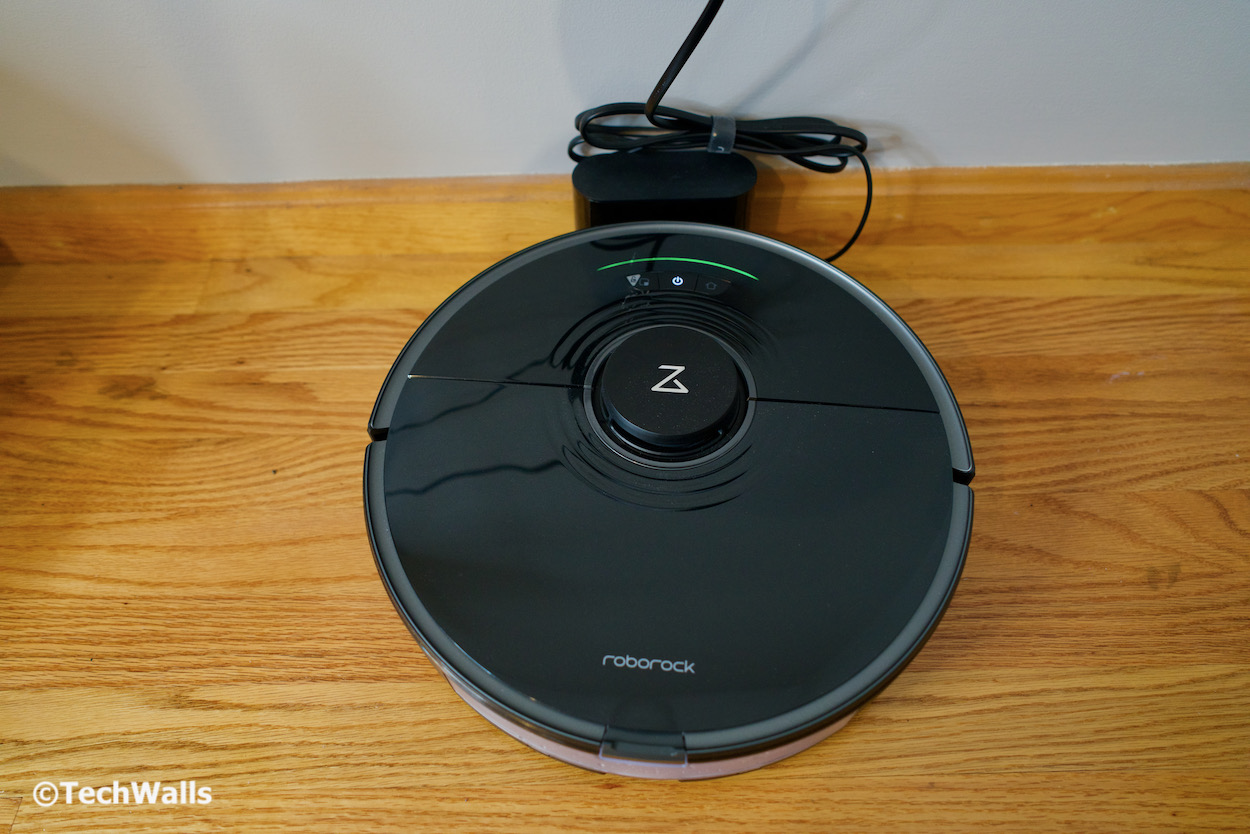
Overall, I have no complaint during the setup, except that there is no cord management in the dock; The power plug is on the right side of the dock, so the setup looks a bit untidy when the power outlet is on the left side.
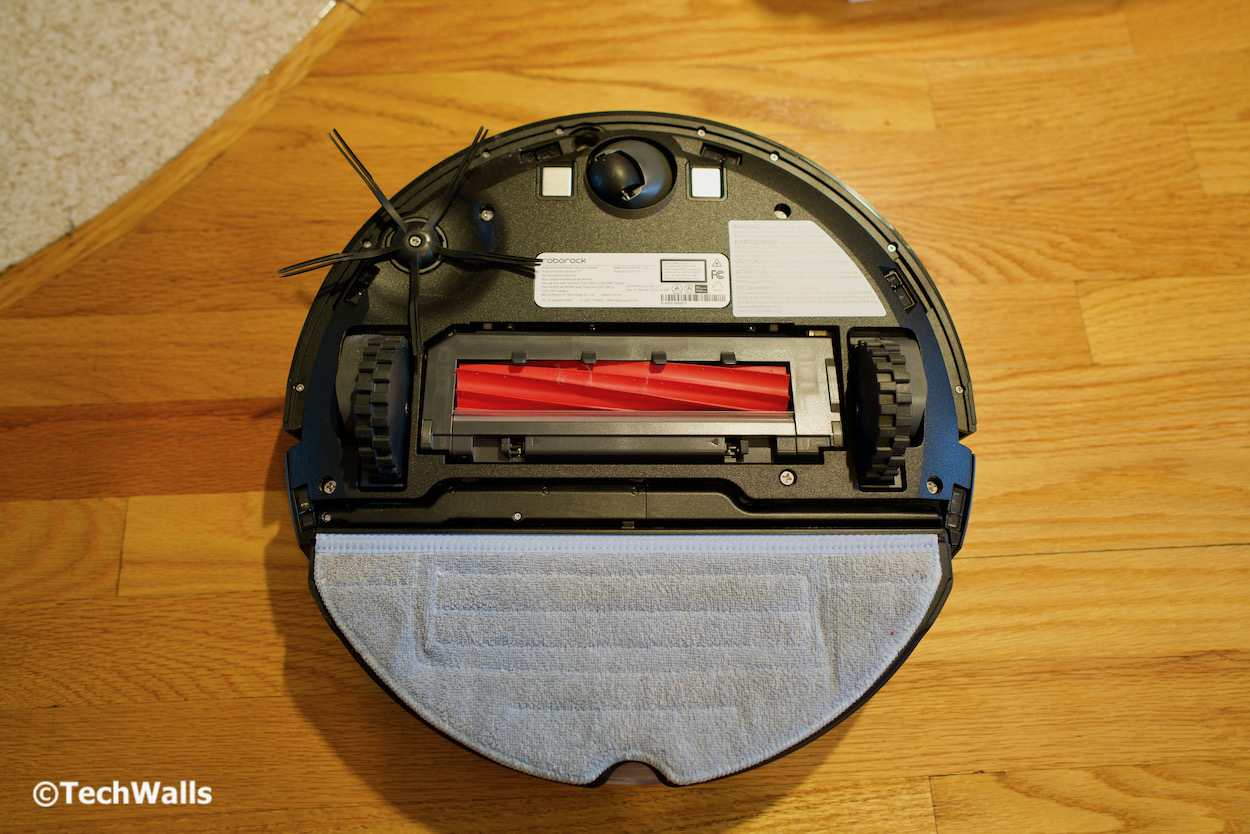
The Roborock S7 comes with a whole bunch of sensors, including a dock locator and a wall sensor on the front, 6 cliff sensors and a carpet sensor on the bottom, and a LiDAR scanner on top. The new carpet sensor allows the robot to detect carpets and rugs accurately and this is probably the first robot vacuum that can lift the mop unit. When the robot runs on carpets, it will automatically lift the mop cloth and boost suction power to capture more debris. This is a great feature because it delivers a seamless experience without complicated settings in the app. Basically, the S7 is designed to vacuum and mop hard floors and clean carpets in only one cleaning session without user input. We don’t need to remove carpets or create no-mop zones manually in the app. The robot detects carpet areas automatically and shows everything on the map.
Notice that the mop just can lift by 5mm (0.2″), so it won’t be able to avoid most carpets, even low-pile ones. I am just using some thin area rugs in my house and the auto-lifting mop works well; It touches the rug surface occasionally but leaves it almost dry. If you have carpets in your house, you need to create no-go zones during mopping.
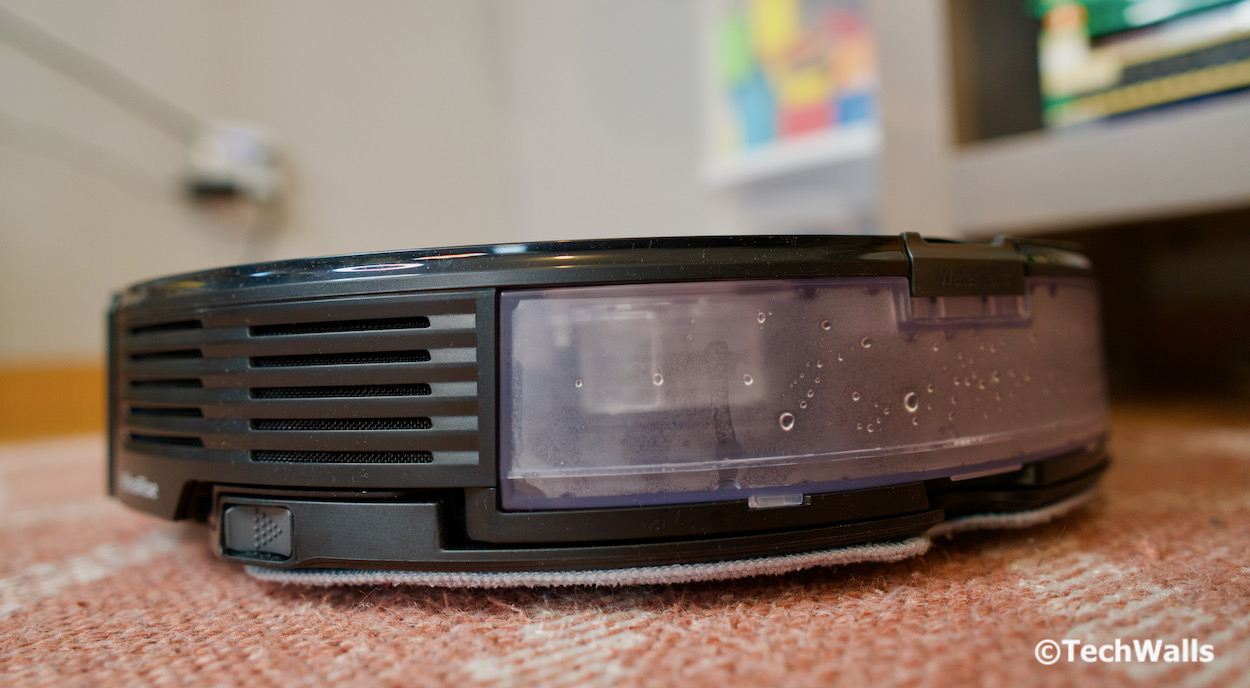
The mop will also lift up when the robot returns to charging dock; This is to ensure the already-cleaned areas remains clean. When it is docked, the mop also stays up to avoid leaving a wet mop on your floor. Unfortunately, this feature doesn’t work as supposed because the front of the docked vacuum is now higher, so the wet mop cloth still rests on my hardwood floor. Therefore, you still need to remove the mop mount to avoid damages to your floor, or you can buy a plastic mat which is not included in the S7 box.
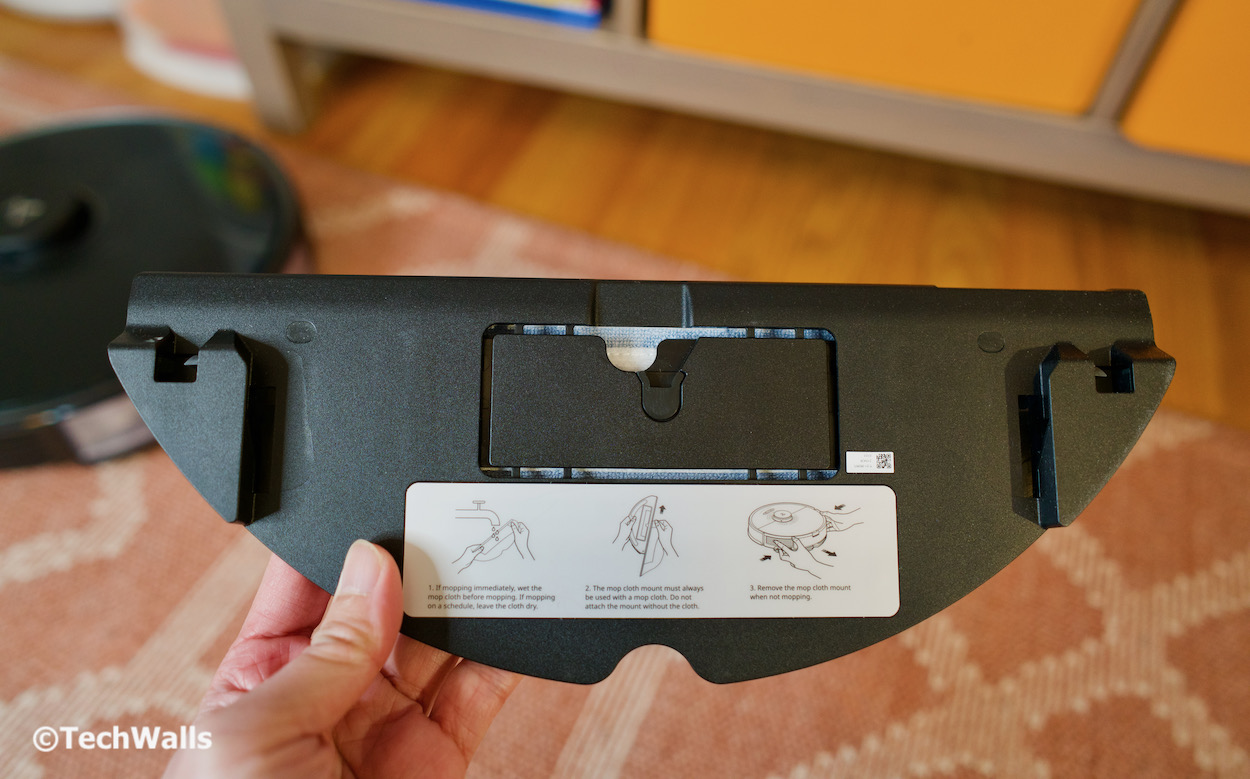
The VibraRise mop mount does not only lift the mop automatically but also can vibrate from 1,650 times/min to 3,000 times/min. You can adjust the scrub settings in the app. The sonic vibration mopping is similar to your sonic toothbrushes as the vibration frequency is up to 50Hz. The oscillating movements could help mop the floor much cleaner. Rather than dragging a wet cloth around, the inner part of the mop now vibrates rapidly to disintegrate dry dirt on the floor.
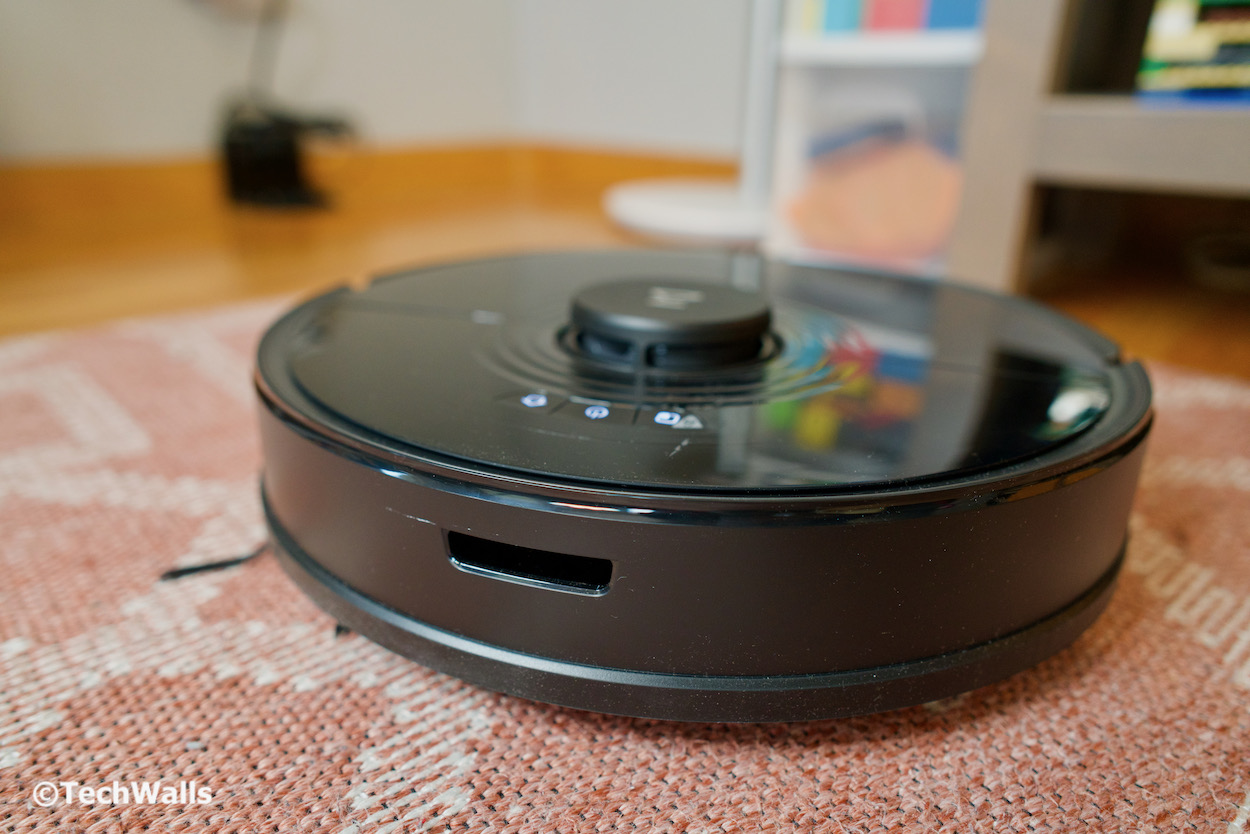
The Roborock S7 is still equipped with a LiDAR scanner, so it manages to map out my floor plan quickly and you can also enable multi-floor maps. After the first full clean of your house, the maps are saved to the memory, so the robot already has an optimized cleaning route the next time you power it on. A full vacuuming and mopping session of my 400-sq-ft floor takes about 36 minutes. The battery capacity is 5,200 mAh and its runtime is up to 3 hours in quiet mode. I run it in balanced mode and the battery level always stays above 70% after each cleaning session.
Another useful feature of the Roborock S7 is voice control. It is compatible with Siri, Amazon Alexa, and Google Home. I often control the robot with my Google Nest Hub and it works flawlessly. After naming rooms in the app, I can give voice commands for the robot to clean a specific room. This feature was not available with Roborock S6 and I had to use the app all the time to select a room. Now, I can completely use the S7 without touching my phone or a redundant remote control. Besides, the robot will automatically return to the dock once finished or I can also tell Google Home to stop a cleaning session and dock it.
The app offers some other useful features like creating virtual barriers, room or zone-based cleaning, adjusting vacuum power and scrub intensity, set up scheduled cleaning, and more. I don’t use the schedule function because I still have to wash the mop, then wait for it to be completely dry and attach it to the bracket again. The dust bin also needs to be emptied after each session, so the experience is still far from 100% automatic.
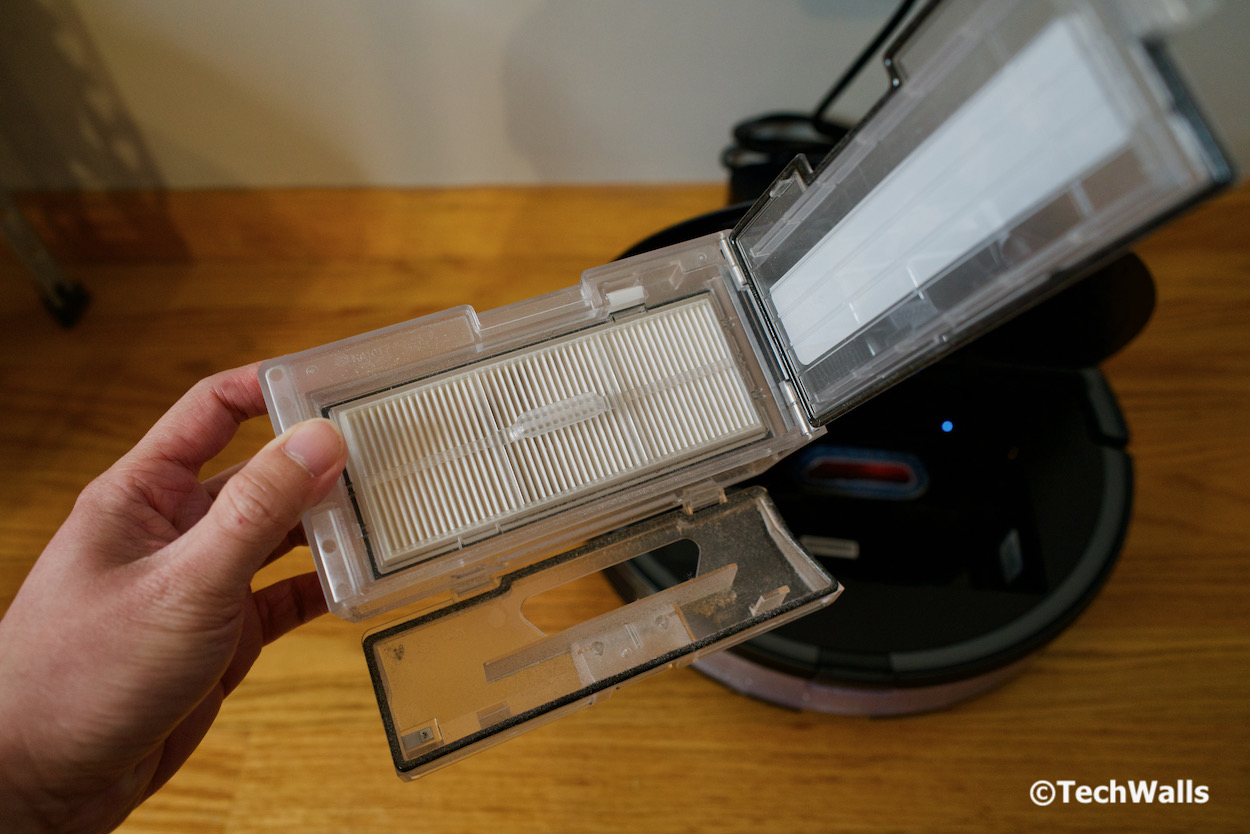
Notably, Roborock is developing a self-empty dock which is compatible with the Roborock S7 and future models. If you remove the dust bin, you can see an air inlet under a cover on the side; This is used to boost airflow when the self-empty dock sucks debris out of the dust bin. Since there is no other port, the debris will be sucked back out through the extractor bar, to the bottom, and into the dock. Unfortunately, that dock must be purchased separately and it probably would cost a hefty price.
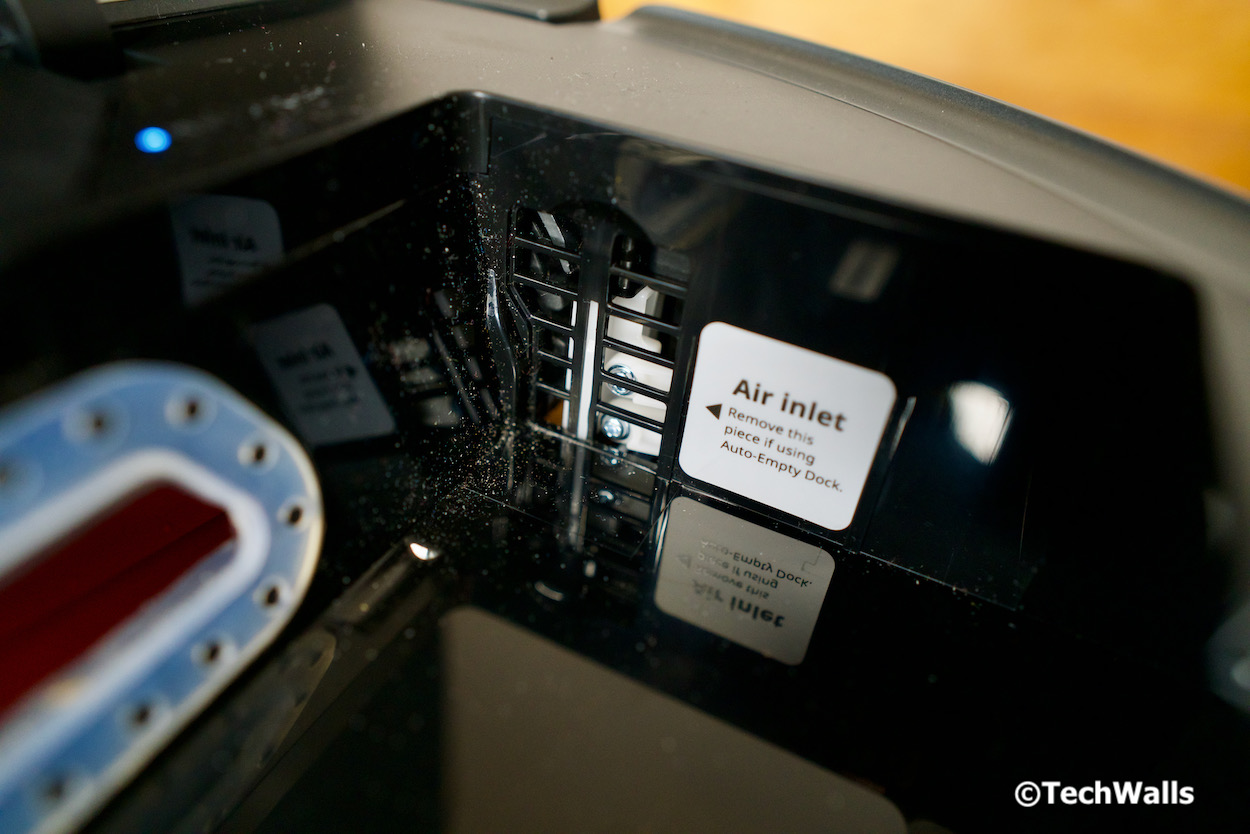
As compared to the Roborock S6 MaxV, the S7’s navigation has worse performance although both are equipped with a LiDAR scanner. The S7 doesn’t have dual ReactiveAI cameras on the front, so it still bumps into walls and furniture very often, especially when you often move your chairs or other furniture around. It also can’t detect small obstacles on the ground such as toys, shoes, or charging cords. Sometimes it drags my sandals around and won’t stop until the sandals hit the wall. However, this is the same problem of all robot vacuums relying on LiDAR scanner.
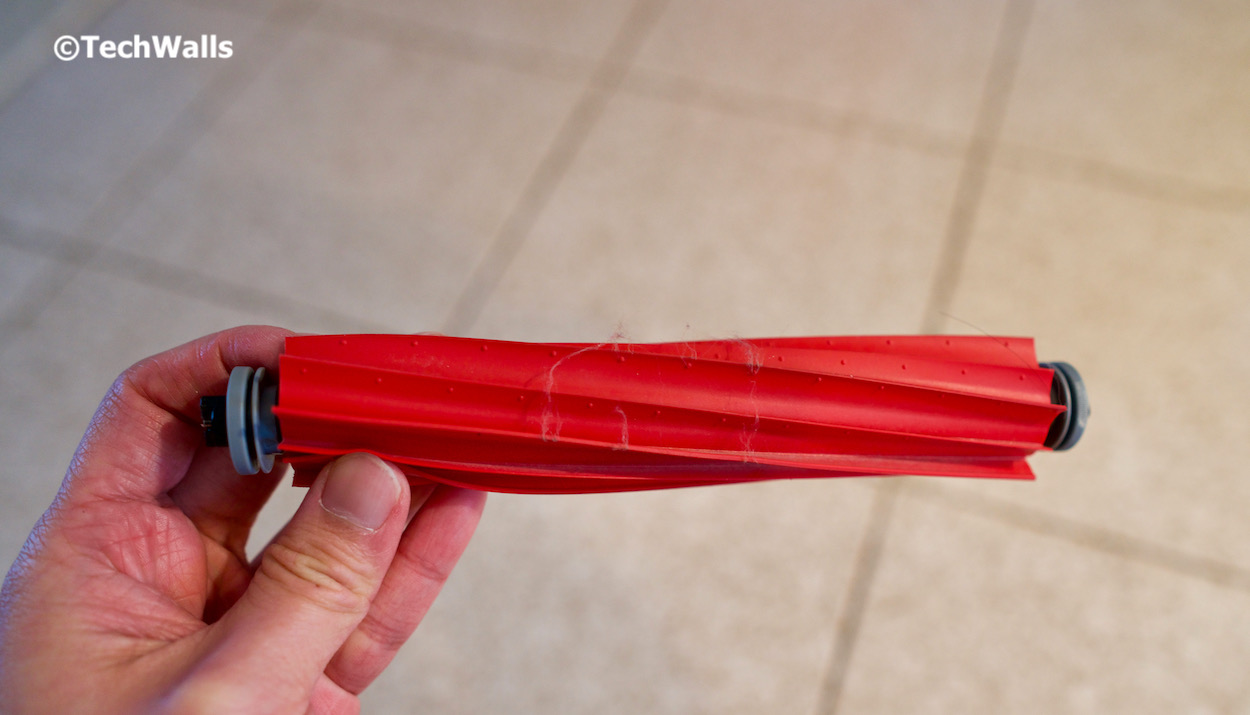
I appreciate that Roborock S7 is now using a rubber extractor instead of a bristle brush. The bristle-less design is more durable, doesn’t scratch your floors, agitates better, and requires less maintenance when dealing with hair tangles. Both the S7 and S6 MaxV has the maximum suction power of 2,500 Pa but I’m really impressed with performance of the S7. Its rubber spiraling blades can even capture crushed stone/substrate easily. The mopping performance is also significantly better than S6 MaxV, thanks to the extra mop pressure and sonic vibration.
In terms of routine maintenance, you will need to wash the mop cloth after each use and replace it after 3-6 months. The rubber extractor and E11-rated air filter should be cleaned or washed every 2 weeks and replaced in 6-12 months. I love that I don’t have to spend much for replacements and I can easily find ones when I need.
Conclusion
Pros
- Uninterrupted vacuuming and mopping experience
- Better vacuuming and mopping performance
- Minimal maintenance
- Selective room cleaning with voice commands
Cons
- No cable management
- No AI cameras for better object recognition
- Auto-lifting mop doesn’t work well on carpets, it still needs to be removed after robot is docked
- Expensive price, especially when the self-empty dock is not included
Although the Roborock S7 has the best vacuuming and mopping performance ever, it is missing the ReactiveAI cameras found on S6 MaxV. Probably Roborock wants to keep this advanced feature for the Roborock S7 MaxV which could be released later this year. The slightly better performance obviously can’t justify the premium price tag of $649. I love the S7 but I’d recommend you to wait for the S7 MaxV or buy the S6 MaxV instead. The S6 MaxV goes on sale regularly or you can buy a used, like-new one for less than $600 on Amazon.
Buy Roborock S7 Robot Vacuum on Amazon
Disclosure: We might earn commission from qualifying purchases. The commission help keep the rest of my content free, so thank you!




alex says
Great review, I wonder if the new rubber spiral brush will work with previous S models.
Dr Monga says
I think yes, it will definitely work
Verno says
Also they could invent one robot to clean the cars inside that would be very nice.
Aengus Ryan says
My brothers friend had one of these. His dog pooped in the kitchen one night, when he came down for breakfast the vacuum had spread it all over the kitchen on it’s travels. It went in the bin after that !
Alex Kains says
Not really vacuums fault. It’s probably the fault of the human who puts dogs inside the house. Disgusting.
Tony says
is the filter in S7 compatible with old models (e.g. S5 Max etc)? are they exchangeable?
Geert Verschaeve says
Thank you for the review. I currently have Roomba and personally I’m super happy with it. Other than it getting stuck at times, it does the job really well. But, it can’t mop. So I’ve been looking into robo-moppers. I do wonder how well it will continue to perform after a couple of months.
Ian says
How is it getting on?